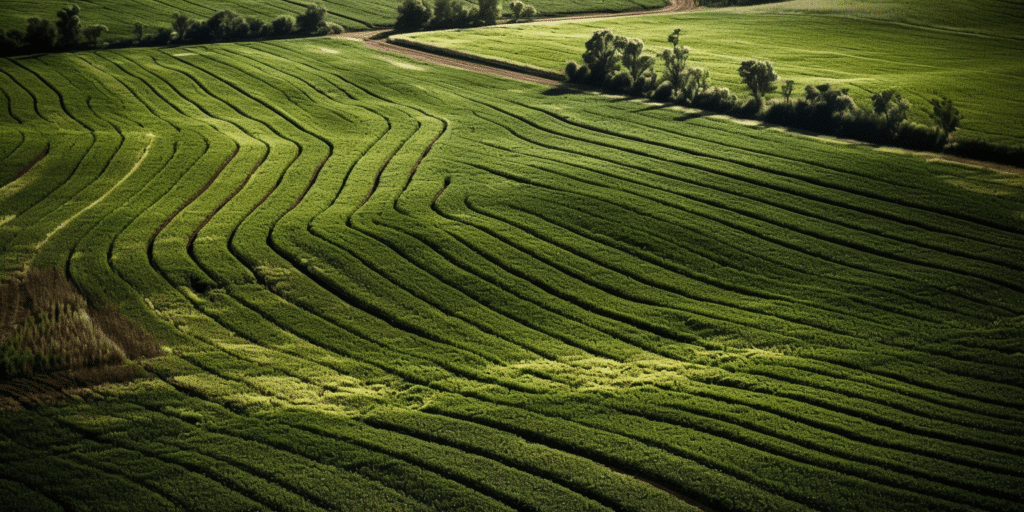Aerial LiDAR, or Light Detection and Ranging, is a groundbreaking technology that has revolutionized the way we gather and analyze data from our environment. By using laser-based sensors attached to aerial vehicles like airplanes or drones, this technology captures highly detailed, three-dimensional images of landscapes and structures with remarkable precision and efficiency. In this article, we will delve into the inner workings of Aerial LiDAR technology, focusing on how Aerial LiDAR works and the key components of these systems.
The Principles of Aerial LiDAR Technology
Aerial LiDAR operates by releasing laser pulses towards the Earth’s surface and calculating the time taken for the light to reflect back to the sensor. The gathered data from these pulses is subsequently processed to create comprehensive and precise topographical maps, which have numerous applications across a wide range of industries.
Key Components of Aerial LiDAR Systems
Aerial LiDAR systems consist of several essential components that work together to collect and process data efficiently. These key components include:
Laser-based sensor: The sensor is the heart of any LiDAR system. It emits laser pulses towards the ground and measures the time it takes for the light to bounce back. The type of laser used and its wavelength can vary depending on the specific application and requirements. Some systems use near-infrared lasers for general-purpose mapping, while others employ green lasers to penetrate water surfaces for bathymetric mapping.
Global Positioning System (GPS): Aerial LiDAR systems utilize GPS technology to accurately determine the position of the aerial vehicle during data collection, ensuring precise geolocation of the acquired data. High-precision GPS receivers are used to achieve centimeter-level accuracy for the system.
Inertial Measurement Unit (IMU): The IMU measures the orientation, velocity, and gravitational forces acting on the aerial vehicle. It helps in correcting the data for any movement or vibrations during the flight. The IMU consists of accelerometers, gyroscopes, and sometimes magnetometers, which work together to provide real-time information about the vehicle’s motion and orientation.
Data storage and processing: The raw data collected by the LiDAR sensor is stored onboard and later processed using specialized software to generate detailed topographical maps and other data products. Modern LiDAR systems are equipped with high-capacity storage devices and powerful onboard processing units to handle the large volumes of data generated during flights.
Aerial platform: The aerial platform can be a manned aircraft, helicopter, or an unmanned aerial vehicle (UAV), also known as a drone. The choice of platform depends on factors like the size and weight of the LiDAR sensor, the desired coverage area, and the specific application requirements.
Understanding the Aerial LiDAR Data Collection Process
The data collection process in Aerial LiDAR involves several key steps, each contributing to the successful acquisition and processing of high-quality data:
Flight planning: Prior to data collection, a flight plan is developed, taking into account factors such as altitude, speed, and the required level of detail for the data. The flight plan also includes considerations for overlapping flight lines, which ensures complete coverage of the survey area and helps to mitigate any potential data gaps.
Data acquisition: The aerial vehicle, equipped with the LiDAR sensor, GPS, and IMU, follows the predetermined flight plan, collecting data along the way. The sensor emits thousands of laser pulses per second, capturing highly detailed information about the Earth’s surface and any objects on it.
Data processing: Once the data is collected, it undergoes several stages of processing. The raw data is first corrected for any motion or orientation errors using the information from the GPS and IMU. Next, the corrected data is processed using specialized software to generate point clouds, which are sets of three-dimensional points representing the Earth’s surface.
Data classification and filtering: The point clouds are then subjected to classification and filtering processes to separate the ground and non-ground points, as well as to identify different types of objects, such as buildings, vegetation, and power lines. This step is crucial for generating accurate and meaningful data products for specific applications.
Data analysis and product generation: The classified and filtered point clouds are further analyzed and processed to create various data products, such as topographical maps, digital elevation models, and digital surface models, depending on the specific application. These products can be visualized, analyzed, and used for decision-making across a wide range of industries.
Applications of Aerial LiDAR Technology
Aerial LiDAR technology has a wide range of applications across numerous industries, thanks to its ability to capture high-resolution, accurate data in a relatively short time. Some of the most prominent applications include:
Topographic mapping: Aerial LiDAR is an ideal tool for generating detailed and accurate topographic maps, which are essential for land-use planning, resource management, and infrastructure development. The high-resolution data provided by LiDAR enables the creation of precise maps of large areas, even in challenging terrains.
Forestry and vegetation management: LiDAR data can be used to assess forest health, monitor growth and biomass, and evaluate the impact of natural disasters or human activities on forests. By identifying different layers of vegetation and tree canopy heights, LiDAR aids in efficient planning and management of forests and natural resources.
Infrastructure and engineering projects: Aerial LiDAR can quickly and accurately map existing infrastructure and terrain, making it invaluable for planning, designing, and constructing new projects such as roads, bridges, and utility networks. It can also be used for monitoring and inspecting existing structures to ensure their safety and integrity.
Flood and natural disaster modeling: Aerial LiDAR can be used to generate accurate digital elevation models that help predict and mitigate the impact of natural disasters such as floods, landslides, and earthquakes. By identifying vulnerable areas and simulating various disaster scenarios, emergency planners can develop effective response strategies and minimize potential damage.
Archaeology and cultural heritage: Aerial LiDAR has the potential to uncover hidden archaeological sites, ancient structures, and cultural landscapes that are difficult to detect through traditional survey methods. By providing detailed 3D models of the Earth’s surface, LiDAR enables archaeologists to make new discoveries and better understand our past.
The Future of Aerial LiDAR
Aerial LiDAR technology continues to evolve, and its potential for future growth and development is immense. Some of the key trends and advancements that are likely to shape the future of Aerial LiDAR include:
Advancements in sensor technology: As LiDAR sensor technology improves, we can expect higher resolution data, faster acquisition speeds, and the ability to capture data in more challenging conditions. This will lead to even more accurate and detailed data products that can benefit a wide range of applications.
Integration with other remote sensing technologies: Combining Aerial LiDAR data with other remote sensing data, such as multispectral and hyperspectral imagery, can provide more comprehensive insights into the Earth’s surface and its features. This integrated approach will enable more informed decision-making across various industries.
Artificial intelligence and machine learning: The integration of artificial intelligence (AI) and machine learning algorithms into LiDAR data processing and analysis will greatly enhance the efficiency and accuracy of data classification and feature extraction. This will lead to more reliable and meaningful data products that can be used for various applications.
Increased adoption of UAVs for LiDAR data collection: As UAV technology continues to advance, we can expect to see an increased adoption of drones for Aerial LiDAR data collection. UAVs offer greater flexibility, lower costs, and the ability to access hard-to-reach areas, making them an attractive option for many applications.
Expanded applications across various industries: As the capabilities of Aerial LiDAR technology continue to grow, new applications will emerge, and existing ones will become even more refined. This will drive further growth and adoption of Aerial LiDAR across a wide range of industries, making it an essential tool for informed decision-making and efficient resource management.
Conclusion
Aerial LiDAR technology has undoubtedly transformed the landscape of data collection and analysis, offering unprecedented accuracy, efficiency, and versatility. By understanding how Aerial LiDAR works, we can appreciate the intricate processes and components that contribute to its remarkable capabilities.
If you’re interested in learning more about the applications and benefits of this revolutionary technology, we encourage you to read the article Aerial LiDAR 101: An Introduction to its Applications and Benefits. This comprehensive guide will provide you with a deeper understanding of how Aerial LiDAR is utilized across various industries and its potential to drive further growth and success.
Should you require any drone services, Blue Falcon Aerial is at your service. Please do not hesitate to contact us for more information or to discuss your specific needs.




